Last time, we shared the work of scholar Nicolas Wyatt, who pointed out that regrouping the consonants of the original Hebrew changes Deuteronomy 32:8 to read: When the Most High gave to the nations their inheritance, when he divided mankind, He set up the boundaries of the nations in accordance with the number of the sons of Bull El (emphasis added).
While it doesn’t change the effect of what happened after the Tower of Babel incident (Yahweh allocating the small-G gods to the nations), reconstructing Deuteronomy 32:8 to read “sons of Bull El” gives it a new, perhaps deeper, meaning. Since we’ve identified El as Kronos, leader of the Titans, which presumably also makes him Shemihazah, ringleader of the rebellious Watchers, it may explain why God divided the world into seventy nations.
This is admittedly confusing. Whether they were sons of Bull El or El Shaddai (Yahweh), why seventy sons? Why would God put powerful supernatural entities with a rebellious streak in charge of His creation anyway?
As for the number of the rebellious “sons of God,” we can only know this for sure: It’s symbolic. The number of the elders of Israel and the number of disciples sent ahead of Jesus into Galilee matched the number of these divine sons. That was no accident. But why that specific number? Maybe there were exactly seventy tribes or nations at the time God stopped the workmen at Babel, or maybe, as we’ll see shortly, it’s related to the belief in the ancient Near East that seventy symbolized a complete set, the full amount.
Now, why did God delegate authority to elohim that He knew would rebel? Remember, this was the punishment God decreed for the disobedient humans of Nimrod’s day. They’d tried to build the Tower of Babel as an artificial “cosmic mountain,” an abode for the gods, and they did it just three generations after God sent a devastating Flood as a consequence for getting too cozy with an earlier group of Watcher-class angels. God’s response was to give humanity what it wanted, and so “the sun and the moon and the stars, all the host of heaven” were “allotted to all the peoples under the whole heaven.”
We can assume that these seventy sons of El were not among the two hundred who descended on Mount Hermon in the days of Jared. The Watchers that Enoch knew were punished for their sin, chained in gloomy darkness until the final judgment, according to Peter and Jude. So, in what sense were these seventy post-Babel angels the sons of El?
This is speculation, you understand, since we’re working without a biblical net here. The term “sons” is not to be taken literally, in the human sense. While we know from Jesus that the angels in Heaven don’t marry, Genesis 6:1–4 makes it clear that they can procreate, at least with human partners. But the Bible never shows us female angels, even though some of the most popular pagan deities are female. Without scriptural support, we can’t say that angels reproduce. So, our best guess is that the sons of Bull El were his children in the same way the Pharisees of Jesus’ day were “of [their] father, the devil”—spiritual descendants rather than genetic and physical offspring.
It’s interesting, isn’t it, that while El (i.e., Kronos/Saturn) was chained in Tartarus with the rest of the Watchers, his seventy “sons” were believed to congregate on Mount Hermon? Remember that. Jesus certainly did.
The pagans didn’t depict El as a god trapped in the underworld, but these spirits lie. Do the fallen angels chained in Tartarus still influence what happens here on the surface? You’d think not, but maybe the angels who rebelled later, after the Tower of Babel incident, found it useful for their cause to preserve the name and memory of El/Kronos/Saturn, and their colleagues, even if their spiritual “father” and his gang of two hundred were indisposed. But those Watchers are coming back for one last shot at the throne of God. More on that later.
Bearing in mind the importance of Mount Hermon to the spirit realm, consider the deeper meaning within the messianic prophecy of Psalm 22:
My God, my God, why have you forsaken me?
Why are you so far from saving me, from the words of my groaning? […]
Many bulls encompass me;
strong bulls of Bashan surround me;
they open wide their mouths at me,
like a ravening and roaring lion. Psalm 22:1, 12–13, ESV; emphasis added)
You recognize the first verse of Psalm 22 because Jesus spoke it from the cross. This was obviously a prophecy of what was to happen on Calvary. But the psalmist wasn’t shown a vision of angry bulls from the Golan Heights surrounding Christ on the cross. He was given a glimpse into the future at spirits from Bashan, demonic entities represented by bulls, who surrounded the cross to celebrate what they thought was their victory over the Messiah.
Confirming this interpretation of Psalm 22:12, Old Testament scholar Dr. Robert D. Miller II recently used archaeological and climatological evidence to prove that “the phrase Bulls of Bashan refers not to the bovine but to the divine, [and] moreover that Iron Age Bashan would have been a terrible land for grazing and the last place to be famous for beef or dairy cattle.”
How about that? Soil samples confirm the truth of the Bible!
Feast of Booths
Now, let’s add another bit of historical detail that may be relevant. The Feast of Tabernacles, or Sukkot (literally “Feast of Booths”), was one of the annual festivals that God directed the Israelites to keep when He gave the Law to Moses. It’s a seven-day festival that begins on the 15th of Tishrei, the seventh month of the Hebrew calendar. That puts it exactly six months after the Feast of Unleavened Bread, which begins on the 15th of Nisan, the first month of the calendar. Those two along with Shavuot, the Feast of Weeks (Pentecost), were the three Pilgrimage Festivals in the Hebrew calendar that required Jewish men to appear before God at the Tabernacle, and later, at the Temple from the time of Solomon until the first century A.D.
Interestingly, the pagan religious calendar in the ancient Near East featured a festival called the akitu that dates back at least to the middle of the third millennium B.C. It was thought to be a new year festival held in the spring to honor the chief god of Babylon, Marduk, but more recent discoveries have shown that there were two akitu festivals, one in the spring, the harvesting season, and the other in the fall, the planting season, and some of them were performed to honor other gods. For example, the oldest known akitu is documented at ancient Ur in Sumer, which was the home city of the moon-god, Sîn.
The akitu festivals began on the 1st of Nisan and 1st of Tishrei, close to the spring and fall equinoxes. Although the length of the festivals changed over the years, it appears they generally lasted eleven or twelve days. So, the Jewish festivals began a few days after their pagan neighbors finished their harvesting and planting rituals.
Sukkot is a seven-day festival. It’s especially interesting because of the sheer number of sacrificial animals that were required, and especially because they were bulls. Numbers 29:12–34 spells out the requirements for the Feast of Booths.
Day 1Day 2Day 3Day 4Day 5Day 6Day 7
13 bulls12 bulls11 bulls10 bulls9 bulls8 bulls7 bulls2
rams2 rams2 rams2 rams2 rams2 rams2 rams
14 lambs14 lambs14 lambs14 lambs14 lambs14 lambs14 lambs1 goat1 goat1 goat1 goat1 goat1 goat1 goat
The Feast of Unleavened Bread, which was likewise a seven-day festival, required only one ram and seven lambs each day. But the biggest difference between the two feasts is that only two bulls were sacrificed each day during the Feast of Unleavened Bread. In fact, none of the other festivals ordained by God for Israel required the sacrifice of more than two bulls per day.
This suggests that Sukkot was unique in the annual calendar. In fact, in several places in the Old Testament it’s simply called “the festival” or “the feast.” But why? Why so many bulls at this particular feast? And why the decreasing number of bulls slaughtered each day?
We may never know specifically, but it’s fascinating to note that a similar festival called the zukru was performed regularly during the time of the Judges (fourteenth through 12th centuries B.C.) in Emar, a city in what is today northern Syria.
It was celebrated in Emar on the first month of the year, called SAG.MU—namely, the “head of the year”. On the first day of the festival, when the moon is full, the god Dagan—the supreme god of Syria— and all the other gods in the pantheon were taken outside the temple and city in the presence of the citizens to a shrine of stones called sikkānu. […]
The first offerings of the zukru-festival were sacrificed on the fourteenth of the month of the “head of the year”:
On the month of SAG.MU (meaning: the head of the year), on the fourteenth day, they offer seventy pure lambs provided by the king…for all the seventy gods [of the city of] Emar.
Seventy lambs for the seventy gods of Emar, headed up by Dagan, sacrificed over seven days during a festival that began in the first month “when the moon is full,” just like at Sukkot.
Quickly: How many bulls were sacrificed at Sukkot?
13 + 12 + 11 + 10 + 9 + 8 + 7 = 70
Remember from an earlier chapter the link between the underworld and Dagan, the bēl pagrê, “lord of the corpse,” or “lord of the dead.” Recall also that the similarities in their roles and descriptions helped us identify Dagan as the Hurrian grain-god Kumarbi and the king of the Titans, Kronos—which brings us back to the Canaanite creator-god El and his seventy sons on Mount Hermon. And then connect Dagan/El, “lord of the dead,” to Mount Hermon, which towers over Bashan, the entrance to the Canaanite underworld.
Is it possible that the festival of the Israelites was a message to the small-G gods who had deceived the nations in and around the land God had chosen for His people—that the seventy bulls sacrificed to Yahweh represented the seventy gods who’d sworn allegiance to Dagan/El/Kronos/Saturn? Or was it simply to commemorate Israel’s rescue from the gods of the nations—to remind the people that they were Yahweh’s allotted heritage?
Given the bull imagery of the pagan gods and demons of the ancient Near East, the answer to both questions is, “Yes.”

Derek Gilbert Bio
Derek P. Gilbert hosts SkyWatchTV, a Christian television program that airs on several national networks, the long-running interview podcast A View from the Bunker, and co-hosts SciFriday, a weekly television program that analyzes science news with his wife, author Sharon K. Gilbert.
Before joining SkyWatchTV in 2015, his secular broadcasting career spanned more than 25 years with stops at radio stations in Philadelphia, Saint Louis, Little Rock, and suburban Chicago.
Derek is a Christian, a husband and a father. He’s been a regular speaker at Bible prophecy conferences in recent years. Derek’s most recent book is The Great Inception: Satan’s PSYOPs from Eden to Armageddon. He has also published the novels The God Conspiracy and Iron Dragons, and he’s a contributing author to the nonfiction anthologies God’s Ghostbusters, Blood on the Altar, I Predict: What 12 Global Experts Believe You Will See by 2025, and When Once We Were a Nation.

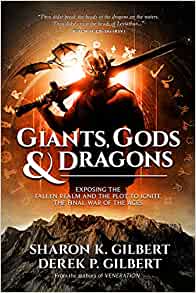
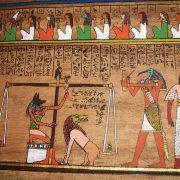

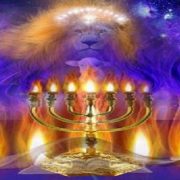
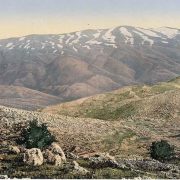
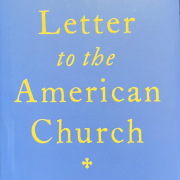


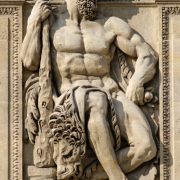



Leave a Reply
Want to join the discussion?Feel free to contribute!